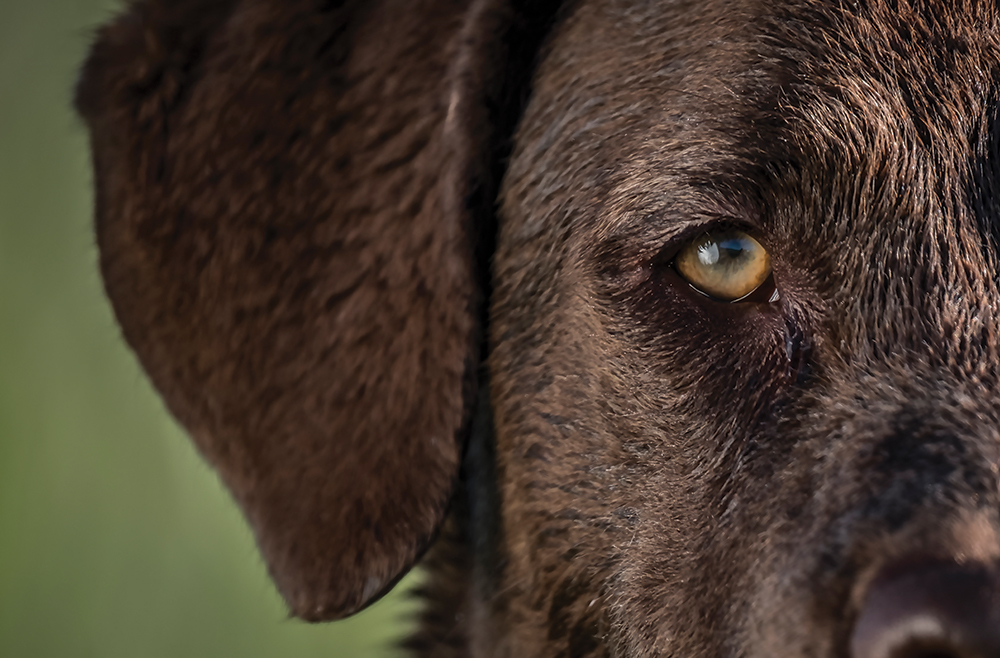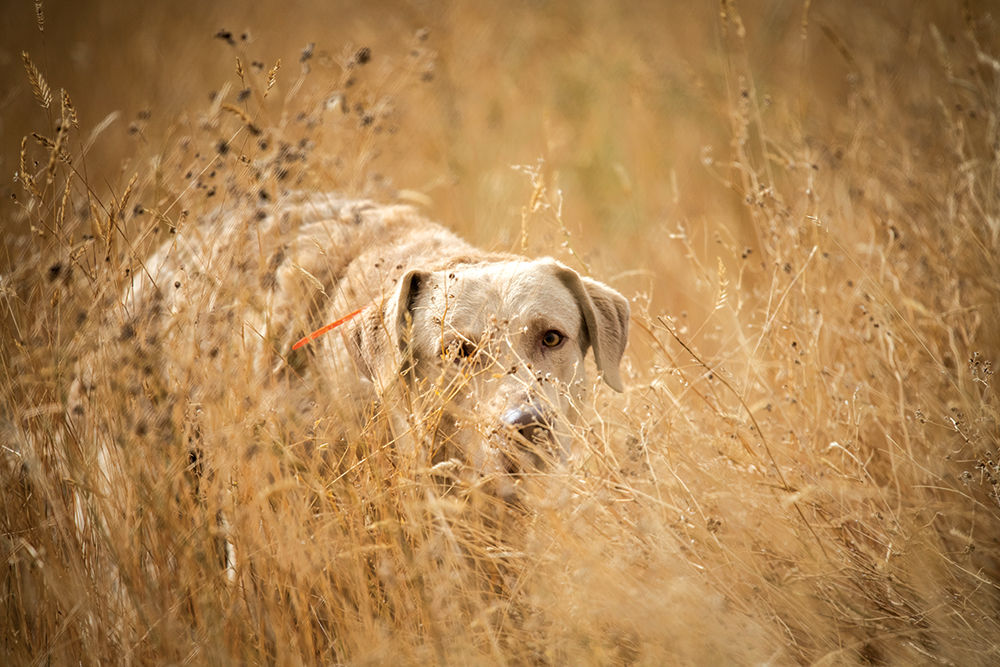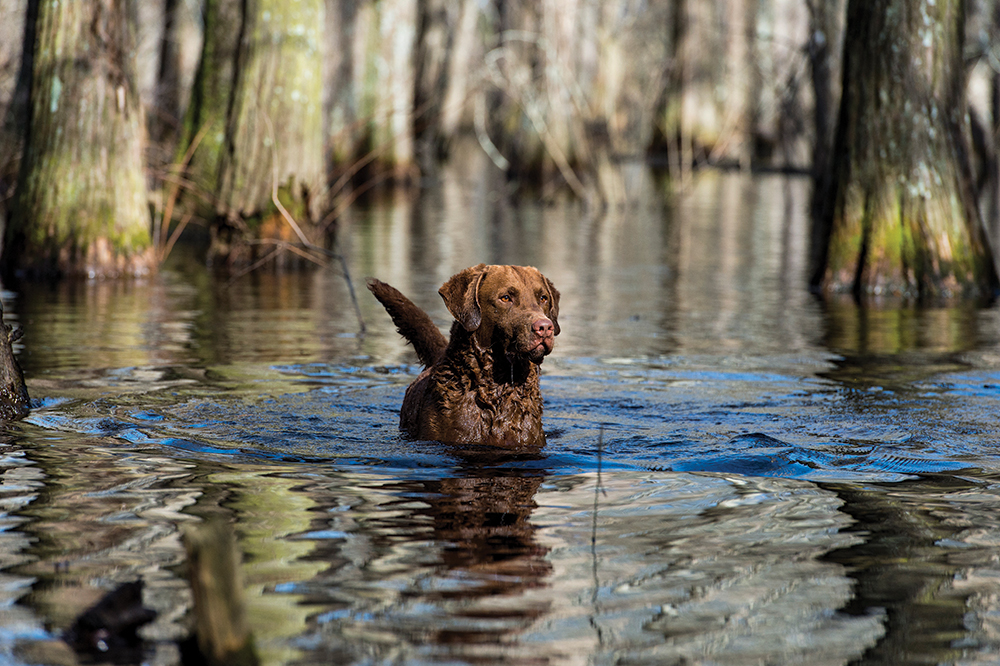All-American Instincts

A heavy gale at sea, a sinking British sailing ship full of codfish, a drunken crew, and the timely rescue of the sloshed sailors plus two Newfoundland pups bound for England…backstories just don’t get any better than that of the Chesapeake Bay retriever. All the tale needs for Hollywood success is a good romance, but despite being credited for the foundation of the the Chessie breed, the two pups, Sailor (male) and Canton (female), never did the deed.
In 1807, George Law, serving on his uncle’s ship, Canton, commanded one of the boats sent to rescue the crew whose own lifeboats had been swept away while they themselves were three sheets to the wind. On board he found the two dogs, which he bought from the English captain for a guinea each when the crew was dropped off in Norfolk, Virginia. As Law wrote in 1845, his ship went on to Baltimore before heading back out to sea. Rather than take the pups with him, Law gave one to a man in West River, Maryland and another to a man in Sparrow’s Point. The dogs were most likely “lesser” Newfoundlands, also known as St. John’s water dogs. They were not particularly large, but both had thick, water-resistant coats and dewclaws.
According to Law, “Both attained great reputation as water dogs. They were most sagacious in everything; particularly so in all duties connected with duck shooting.” Governor Edward Lloyd bought Sailor and took him to his estate on the Eastern Shore. Canton stayed in Sparrow’s Point. Both dogs were subsequently bred to local dogs. What is remarkable is that their offspring were so similar that they could be identified together as a distinct breed.
Dyane Baldwin, the former American Chesapeake Club (ACC) historian, wrote, “While there is no recorded mating of the two dogs, tales of their hunting prowess and that of their progeny abound in early sporting books. In 1877, when strains from both the Eastern and Western Shores of Maryland met at the Poultry & Fanciers Association Show in Baltimore, their similarities were sufficient to be recognized as types belonging to one breed—the Chesapeake Bay Ducking Dog.”
Ask anyone to describe a Chessie, and the first two traits mentioned are always the coat and the eyes. The Chessie coat is legendary. It is fairly short and very dense, with an oily, wavy outer coat and finer, woolly undercoat. Together these protect the dog’s skin from cold water and help the coat dry quickly. They also give the Chesapeake a distinct bouquet which, to the uninitiated, smells like a combination of wet wool, oilskin, and broccoli; but to Chessie lovers, it is hunting dog aromatherapy at its best.

Chessies come in a range of colors, from a light “deadgrass” to the reddish “sedge” tones to dark brown. The concept behind these coat colors is to have a dog that will provide natural camouflage—be of a color that will best blend with its surroundings.
Chessies’ second most noted trait is their light eye color. John Mercer, Sailor’s first owner, wrote about these intriguing eyes. “[Sailor’s] eyes were very peculiar: they were so light as to have almost an unnatural appearance…and it is remarkable, that in a visit which I made to the Eastern Shore, nearly twenty years after he was sent there…I saw many of his descendants who were marked with this peculiarity.”
According to the ACC, the Chesapeake breed standard calls for a broad, round skull, jaws able to carry large gamebirds with an easy hold, and a powerful body that is deep and wide in the chest with shoulders built for “full liberty of movement.” Some Chessies, particularly those bred for the show ring rather than hunting, have overly wide heads and blocky musculature. The ACC standard notes, however, that a Chessie’s size and substance should not be overemphasized at the expense of the agility and stamina necessary for a working retriever.
High-drama history and outstanding physical traits aside, the Chesapeake Bay retriever—the state dog of Maryland—is arguably the most revered cold-weather, big-water waterfowl retriever around. Less known is the fact that they are excellent upland hunting dogs in all but the warmest climates.
Sharon Potter is a Team Huntsmith professional trainer and an outdoor writer. She is also a Chessie breeder. Sharon hunts grouse and pheasant in her home state of Wisconsin with her Chessies and a Browning 20-gauge side-by-side. Describing the Chesapeake’s upland hunting style, Sharon says, “They hunt like other flushing breeds but closer to a Lab than a spaniel. The flush is often a delayed flush rather than the hard and immediate flush of a springer, giving you a bit more time to prepare for a shot. Chessies tend to stay well within gun range. Where they really shine is in tracking a runner or cripple, because their determination won’t let them give up.”
Chessies are frequently compared to Labradors, but Chessie owners will universally agree the two breeds have notably different temperaments. Sharon believes the biggest difference lies in the way Chessies originated, taking us back to that story of the breed’s beginnings on the Maryland shores.

“While Labs have been bred for trainability—to follow directions from humans—Chesapeakes were developed to work and hunt straight out of the box, without much training at all. That speaks to a strength of instinct a lot closer to the wild than most other hunting breeds—an almost feral level of instinctive ability when it comes to hunting. It is that very strength of instinct that often gives them a reputation for being stubborn,” Sharon explains.
“Their primitive instincts (which are usually the best way to actually get the job done) often conflict with a certain way we humans want things done. Given free rein to follow their instincts, a Chesapeake will get the job done with a minimum of effort and without much help from us. Try to micromanage and overdirect, and you’ll get a dog that will likely flip you the paw and do it their way. We as breeders have done a good job of adding trainability and tractability to the original Chessie while keeping that amazing strength of instinct that separates them from other breeds.”
Cooper, my husband’s handsome brown, 85-pound Chessie, was a dynamite big-water retriever when it came to duck hunting on Lake Champlain. That was his main job. Upland hunting was just a bonus, yet that is where Sharon’s description rings especially true to me. Cooper was a natural at ruffed grouse and woodcock. We never trained him to hunt the uplands. No hours upon hours working to keep him in range or teaching him to track in the woods, pause, or flush. He simply figured it out for himself, drawing from instinct and smarts.
One particular hunt in a retired apple orchard sticks out in my mind, one of the first times I took him grouse hunting. Cooper pranced in front as I wove through the trees. Twice, then three times, I saw him retrace his steps and work from patch to patch. It was obvious his nose was zeroing in on the scent, sorting out older traces from fresh ones. In a flash, his tail went from steady wagging to furiously circling as he worked deeper under a set of low branches. He hesitated then dove around the tree, flushing the grouse to the side. I had an easy, open-sky shot. Cooper was halfway to the bird before it hit the ground. He snatched the grouse from a bed of dropped apples and brought it straight back to me, big paws happily pounding the thick grass, his curved tail held high.
The saying that you can only train a Chessie with a two-by-four has been around a long time. They are also known as one-person dogs. The reality, however, is that just as with many other breeds, some Chessies are more hardheaded than others, while others are wonderfully cooperative. Some are more sociable, and others less so. Cooper loved people and often displayed his front teeth with lips pulled up in a smile, which many Chessies do as a sign of joy. I do believe, though, that he is the only dog we have ever owned that would have protected me with his life.
Asked about Chessies’ temperament, Sharon says, “Today’s Chesapeakes are friendly and fun, and when well socialized, get along with people and other dogs very well. They do have a protective side and may take a few minutes to warm up to strangers, but once you’ve shown them someone is allowed, they will accept them and be looking for attention and petting. They have a big personality…and a wicked sense of humor.”

Originally published in Volume 7, Number 1 (Dec-Jan 2019) of Covey Rise.
























